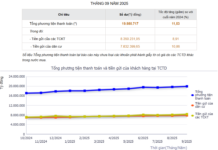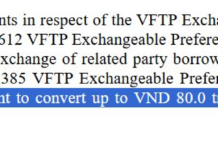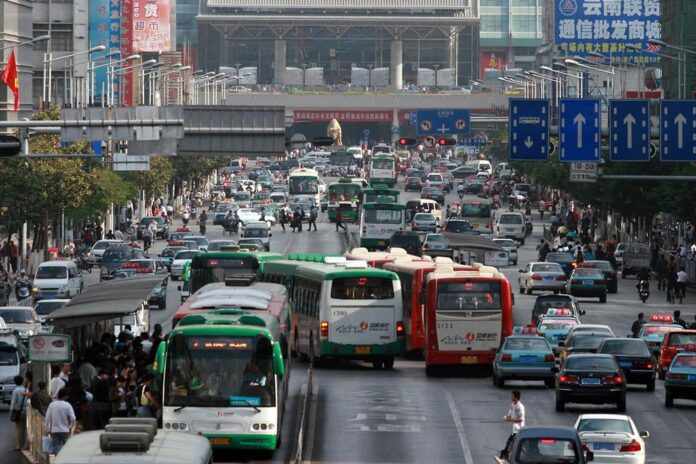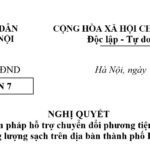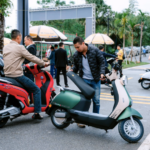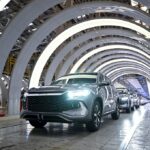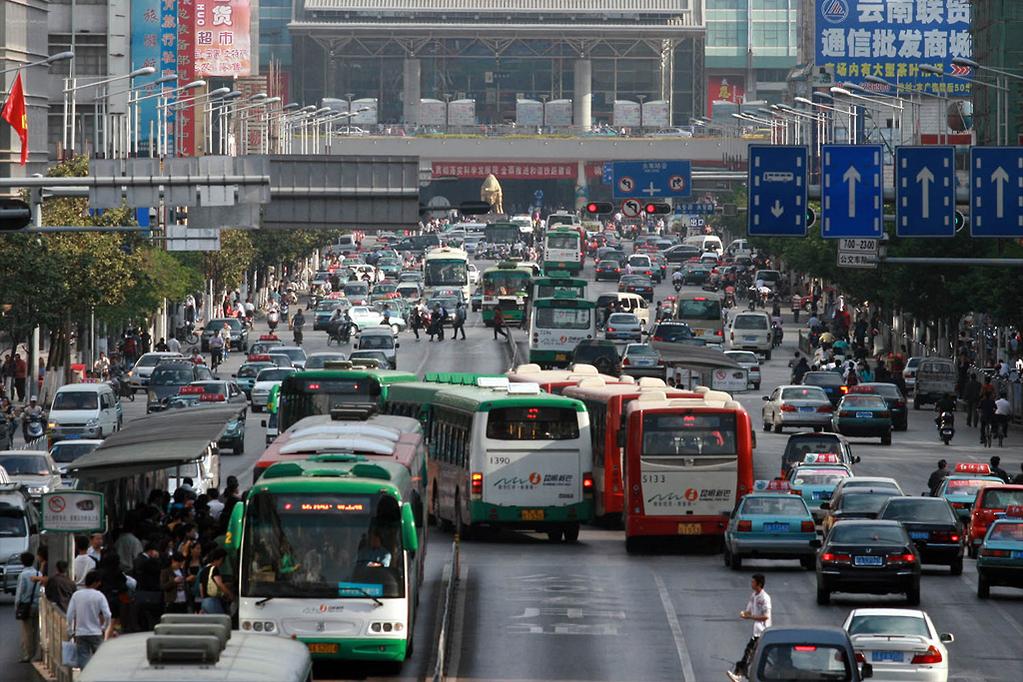
Hanoi has officially announced a roadmap to ban gasoline-powered motorcycles within the inner city area, bounded by Ring Road 1, starting from July 1, 2026. This long-term initiative is not an isolated move but aligns with global trends. Many major cities worldwide have already implemented bans or restrictions on fossil fuel vehicles, particularly gasoline motorcycles and diesel/gasoline cars, decades ahead of Hanoi. Previously, numerous global cities have taken various measures to limit gasoline-powered vehicles.
In China, Beijing is a pioneer in restricting gasoline motorcycles. Records show that the ban or restriction on gasoline motorcycles in Beijing’s city center began in 1980, initially within the Third Ring Road and gradually expanding to other inner districts. Beyond banning gasoline motorcycles, Beijing has enforced strict emission standards and vehicle inspections to phase out old gasoline/diesel vehicles, ensuring new vehicles meet environmental standards. This makes Beijing one of the earliest cities globally to experiment with removing gasoline motorcycles from its inner city.
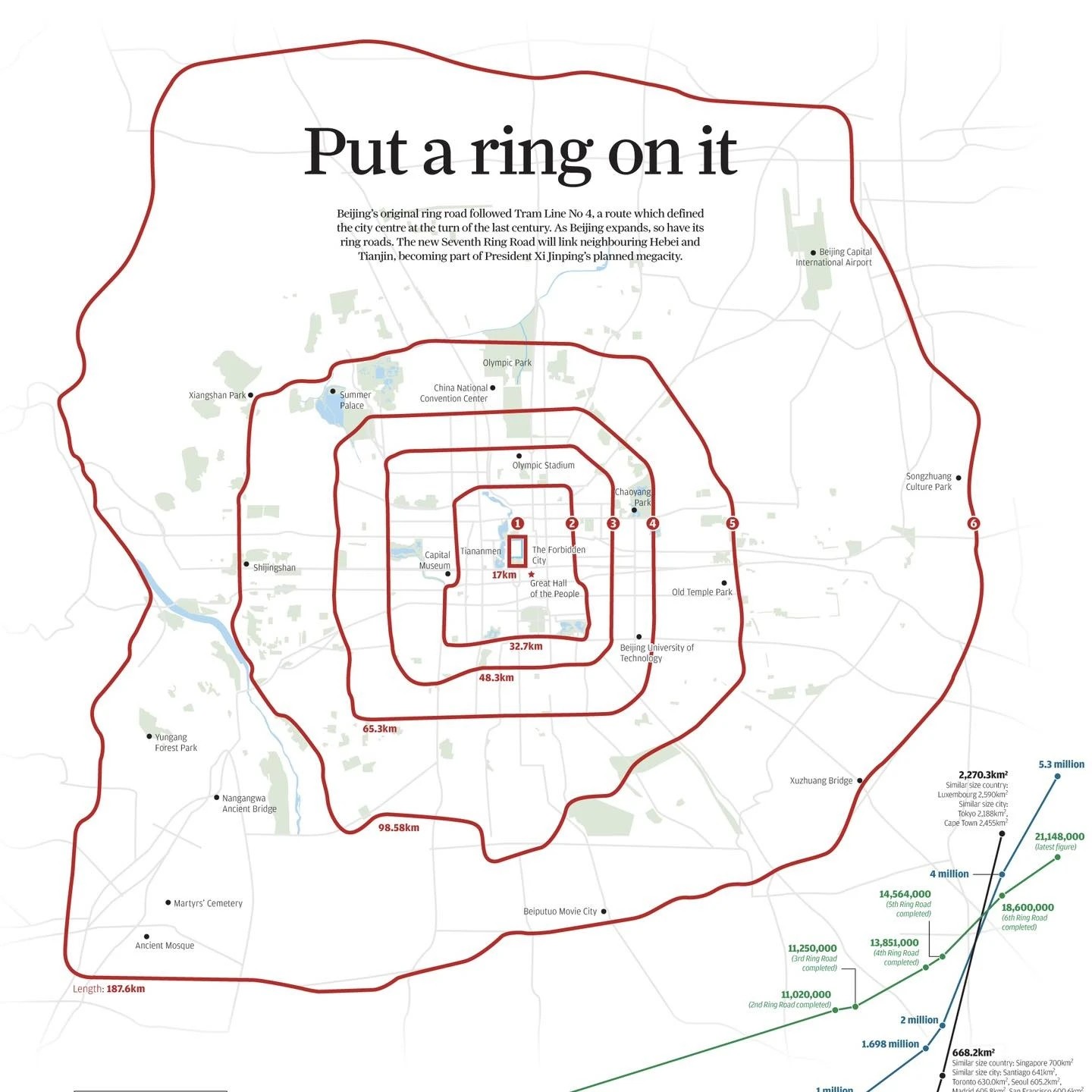
Ring roads of Beijing, China. (Source: SCMP)
Also in China, Shenzhen is another notable example. The city began banning gasoline motorcycles on certain roads in 2003 and later extended the ban to the entire inner city. This regulation was accompanied by incentives to promote electric motorcycles and the development of battery-swapping infrastructure, aiming to fully replace gasoline motorcycles. Shenzhen’s experience highlights the need for a clear roadmap and a combination of incentives and traffic control mechanisms when transitioning from gasoline to electric motorcycles.
Shanghai is another Chinese city that implemented early restrictions on gasoline motorcycles. Since 2002, Shanghai has stopped issuing new license plates for gasoline and diesel motorcycles. Older vehicles are subject to a “retirement” policy: gasoline motorcycles are removed from circulation after 13 years from registration or 120,000 km of use. These measures have limited gasoline motorcycle ownership, encouraging residents to switch to alternative vehicles or electric options.
Similarly, Guangzhou banned all gasoline motorcycles in its city center around 2007 and stopped registering new gasoline motorcycles, gradually expanding the ban each year. By 2025, approximately 200 Chinese cities had adopted similar measures, ranging from complete bans on gasoline motorcycles to halting new registrations, controlling emissions, and promoting electric vehicles.
Beyond China, many European cities have also implemented policies restricting gasoline/diesel vehicles in their city centers. London, the capital of the United Kingdom, is a prime example. The city established the Ultra Low Emission Zone (ULEZ) on April 8, 2019, initially in the city center, requiring non-compliant vehicles to pay a fee to enter. In August 2023, ULEZ was expanded to cover Greater London, spanning nearly 1,500 km² and affecting approximately 9 million residents.
Data shows that after the expansion, non-compliant vehicles decreased by about 77,000 per day, a 45% reduction. Compliance with emission standards in London now stands at around 95%. These measures not only control older vehicles but also incentivize residents to adopt low-emission options.
Paris, the capital of France, is another exemplar of gasoline vehicle restrictions. Since the early 2010s, Paris has implemented a vehicle classification system based on emission standards. Non-compliant vehicles face restrictions in the city center. By 2030, Paris aims to allow only zero-emission vehicles, including electric vehicles and public transport, in its central area. This includes bans, operating hour restrictions, and fees for non-compliant vehicles.

Low Emission Zone (LEZ) in major German cities.
In Germany, from around 2005–2010, cities like Berlin, Cologne, and Hanover established Low Emission Zones (LEZ), allowing only vehicles meeting emission standards to enter city centers. Gasoline vehicles must meet Euro 1 standards, while diesel vehicles must meet Euro 4 standards. These measures help German cities control older vehicles, reduce air pollution, and encourage eco-friendly transportation.
Norway, a Nordic country outside the EU, does not impose a hard ban on fossil fuel vehicles. Instead, the government has made electric vehicles irresistibly attractive. Norway offers tax exemptions on electric vehicle imports, no VAT, free parking, access to bus lanes, and a 75% discount on highway tolls.
Thanks to these comprehensive incentives, over 80% of new vehicles sold in Oslo in 2023 were electric. The city center is gradually transforming into a pedestrian, cycling, and public transport-friendly space.
Additionally, many countries are moving toward a low-emission future. As Southeast Asia’s largest economy with over 120 million motorcycles, Indonesia aims to have 2 million electric motorcycles by 2025 and reduce greenhouse gas emissions by 29% by 2030. The government has accelerated battery-powered motorcycle programs and encouraged electric vehicle use in public institutions.
Taiwan has set ambitious goals to phase out gasoline motorcycles by 2035 and gasoline cars by 2040. To achieve this, Taiwan offers incentives such as purchase subsidies, special license plates, dedicated parking, discounted parking fees, and thousands of charging stations.
While measures vary by city, they all share a common goal: to eliminate or significantly reduce fossil fuel vehicles in city centers and promote low-emission alternatives. Hanoi’s 2026 ban on gasoline motorcycles within Ring Road 1 aligns with this global trend, positioning the city alongside other progressive urban centers worldwide.
Black Friday Deals Galore, Yet Shoppers Remain Unenthusiastic
Black Friday 2025 is here, and fashion retailers are pulling out all the stops with jaw-dropping discounts of up to 80% off and enticing promotions. Yet, despite these massive sales, customer engagement remains surprisingly low.
Hanoi Approves Series of Incentives for Old Apartment Renovation Projects
Property owners whose land is reclaimed for the purpose of redeveloping a specific urban area (projects intended for residential use) are eligible for on-site resettlement arrangements. Additionally, those affected by the land reclamation benefit from support policies, including progress incentives for timely land handover as per regulations.
Hanoi Accelerates Green Vehicle Transition: How Will Businesses Be Supported in Investing in Electric Vehicle Charging Stations?
For businesses investing in the construction of public clean energy refueling infrastructure, Hanoi is considering a support plan that includes a 30% interest rate subsidy or access to loans from the Development Investment Fund at a preferential rate of approximately 4.98%.






